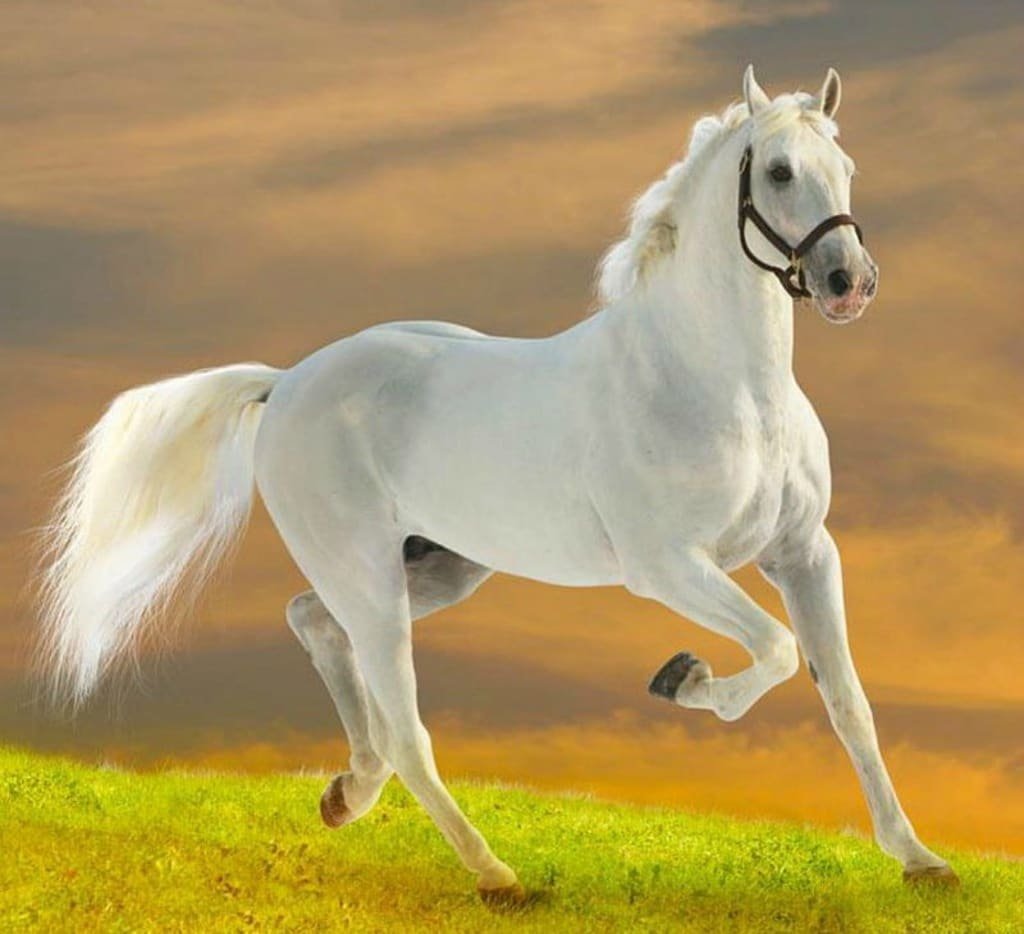Introduction
White horses have captivated people for centuries. Whether appearing in myths, parades, or on a quiet farm, their bright coats and graceful presence make them stand out. This article explains what “white horses” really are, how they differ from gray horses, their genetics, cultural significance, care basics, and a few famous examples.
What does “white horse” mean?
Many people use “white horse” to describe any light-colored horse, but technically a true white horse has unpigmented (white) hair and often pink skin. That contrasts with gray horses, which are born colored (bay, chestnut, black) and gradually lighten as they age until their hair appears white while the skin remains dark.
Key differences:
- True white horses: white hair, pink skin, often blue or brown eyes. They are white from birth.
- Gray horses: dark skin, lighten with age, usually born a darker color.
Understanding this difference helps when reading breed records, veterinary notes, or historical descriptions.
The genetics behind white coats
Horse coat color genetics is fascinating and sometimes complex. A few common genetic causes for a white appearance:
- Dominant white (W gene variants): Several mutations produce true white horses. These are usually dominant, meaning one copy can cause white hair and pink skin. Some variants can be associated with health issues, but many are healthy.
- Sabino and splash white patterns: These can produce very extensive white markings that sometimes make a foal appear nearly all white. Skin pigmentation may vary.
- Leucism and other rare alleles: Less common genetic changes can reduce pigmentation.
Genetic testing is available and useful for breeders who want to understand coat-color inheritance or avoid pairing combinations that risk health problems.
Health and lifespan
White horses are not automatically less healthy than other horses. Lifespan and general health depend primarily on genetics, care, nutrition, and workload. Two specific health considerations to note:
- Sun sensitivity: True white horses with pink skin can be more susceptible to sunburn, especially on pink areas (muzzle, around eyes). Owners use sunblock, fly masks, or shade to protect them.
- Eye and skin issues: Some white coat genes can be associated with congenital deafness or, rarely, other conditions. Responsible breeders often test for known problematic variants.
Regular veterinary care, dental checks, vaccinations, and hoof care are as important for white horses as for any other.
Famous white horses in culture and history
White horses appear across cultures as powerful symbols. A few notable examples:
- Rohirrim and Shadowfax (fiction): In literature and film, white or silver horses often symbolize nobility and wisdom.
- White horses in mythology: From the Celtic horse goddess Epona to the Hindu god Kalki’s mount, white horses frequently represent purity, divine power, or prophetic arrival.
- Ceremonial and parade horses: Many royal and ceremonial mounts are white or gray (which often looks white), chosen for visual impact during public events.
Because they show up so often in stories and ritual, white horses carry layered meanings that differ by era and culture.
Symbolism and meanings
Across time and place, white horses have been associated with:
- Purity and innocence
- Power, sovereignty, and heroism
- Spiritual or supernatural presence
- Transformation and change
Careful readers will notice different contexts change the meaning: a white steed in a wedding procession signals celebration, while a white horse in an apocalyptic prophecy may carry ominous implications.
Practical care tips for owners
If you own or plan to care for a white horse, these practical tips will help keep its coat healthy and show-ready:
- Sun protection: Use masks, sheets, or equine-safe sunscreen on pink areas.
- Grooming: White coats show dirt easily. Regular grooming, spot cleaning, and occasional whitening shampoos help maintain coat brightness.
- Skin checks: Inspect pink-skinned areas for irritation, sunburn, or lesions.
- Stable hygiene: Light coats show stains from urine and manure — keep bedding clean and dry.
- Fly protection: White horses attract attention from biting insects; use appropriate repellents and masks when needed.
- Balanced diet: Nutrition affects coat condition ensure adequate protein, fats, vitamins, and minerals.
Routine preventative care (vaccinations, deworming, hoof trimming) is essential regardless of coat color.
Breeding considerations
Breeding for white coats requires knowledge and caution:
- Use genetic testing to identify coat-color alleles and avoid combinations linked to health problems.
- Be aware that some dominant white variants are rare and can behave unpredictably.
- Work with an experienced breeder or genetic counselor when planning matings specifically for white offspring.
Responsible breeding balances aesthetic goals with overall health and welfare.
Myths vs. facts
Myth: White horses always have special powers.
Fact: Cultural stories give them symbolic power, but biologically they’re ordinary horses with unique coat genetics.
Myth: Gray and white horses are the same.
Fact: They can look similar, but genetics and skin pigmentation differ.
Myth: White horses are weaker or unhealthy.
Fact: Coat color alone does not determine strength or health; care and genetics do.
Famous breeds that commonly produce white or very light horses
While true white is rare, several breeds are known for producing white or light-colored members:
- Lipizzaner: Famous for their early dark foals that turn mostly white/gray with age.
- Andalusian and Lusitano: Often seen in light gray and white.
- Camargue: Native to southern France; many are light gray/white and live semi-wild.
- Some draft and ceremonial breeds are selectively bred for light coats for public appearances.
Conclusion
White horses combine biological interest with deep cultural resonance. Whether you’re drawn to them for their striking looks, their roles in myth, or as potential mounts, understanding what makes a white horse genetically and practically helps you appreciate them more fully. From genetics and care to symbolism and famous breeds, the world of white horses is rich, layered, and endlessly fascinating.
